-
 bitcoin
bitcoin $122025.899241 USD
-2.12% -
 ethereum
ethereum $4488.068729 USD
-4.11% -
 bnb
bnb $1315.348019 USD
8.65% -
 tether
tether $1.000457 USD
0.03% -
 xrp
xrp $2.875326 USD
-3.69% -
 solana
solana $222.043604 USD
-4.07% -
 usd-coin
usd-coin $0.999682 USD
0.00% -
 dogecoin
dogecoin $0.249887 USD
-5.62% -
 tron
tron $0.337379 USD
-2.59% -
 cardano
cardano $0.827763 USD
-5.06% -
 hyperliquid
hyperliquid $45.774531 USD
-2.43% -
 chainlink
chainlink $22.079309 USD
-5.87% -
 ethena-usde
ethena-usde $1.000156 USD
0.02% -
 sui
sui $3.482566 USD
-3.57% -
 stellar
stellar $0.386982 USD
-4.92%
How is the Kraken contract liquidation price calculated? How to add margin?
Kraken's liquidation price is calculated using entry price, initial, and maintenance margins; adding margin can help avoid liquidation and manage positions effectively.
May 18, 2025 at 07:21 pm
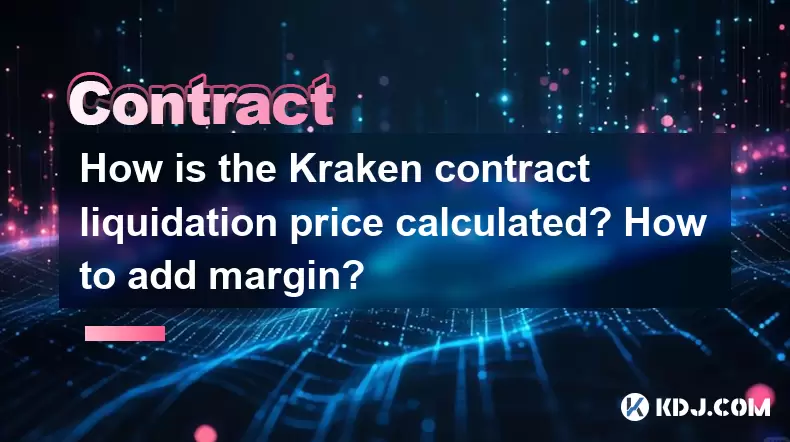
The Kraken exchange is known for its robust trading platform and extensive range of features, including margin trading. Understanding how the liquidation price is calculated and how to add margin is crucial for traders looking to manage their positions effectively. In this article, we will delve into the specifics of the Kraken contract liquidation price calculation and provide a detailed guide on how to add margin to your positions.
Understanding Kraken Contract Liquidation Price
Liquidation is a critical concept in margin trading, as it determines when a position is forcibly closed to prevent further losses. On Kraken, the liquidation price is calculated based on several factors, including the initial margin, maintenance margin, and the size of the position.
The formula for calculating the liquidation price on Kraken is as follows:
[ \text{Liquidation Price} = \frac{\text{Entry Price} \times (1 \pm \text{Initial Margin})}{(1 \pm \text{Maintenance Margin})} ]
Here, the plus or minus sign depends on whether you are taking a long or short position. For a long position, you use the minus sign, and for a short position, you use the plus sign.
Example: If you enter a long position at an entry price of $50,000 with an initial margin of 10% and a maintenance margin of 5%, the liquidation price would be calculated as:
[ \text{Liquidation Price} = \frac{50,000 \times (1 - 0.10)}{(1 - 0.05)} = \frac{50,000 \times 0.90}{0.95} = \frac{45,000}{0.95} \approx 47,368.42 ]
This means that if the market price drops to $47,368.42, your position will be liquidated.
Factors Affecting Liquidation Price
Several factors can influence the liquidation price on Kraken. Understanding these can help you manage your positions more effectively.
Initial Margin: This is the amount of margin required to open a position. A higher initial margin can provide a buffer against liquidation but also requires more capital upfront.
Maintenance Margin: This is the minimum amount of margin required to keep a position open. If the account balance falls below this level, the position will be liquidated.
Position Size: Larger positions require more margin, which can affect the liquidation price. A larger position size means a smaller percentage change in the market price can trigger liquidation.
Market Volatility: High volatility can lead to rapid changes in the liquidation price, making it more challenging to manage positions.
How to Add Margin on Kraken
Adding margin to your positions on Kraken can help you avoid liquidation and maintain your trades. Here is a detailed guide on how to add margin:
Log into Your Kraken Account: Start by logging into your Kraken account. Ensure you have sufficient funds in your account to add margin.
Navigate to the Margin Trading Section: Once logged in, go to the margin trading section of the platform. This can usually be found under the 'Trade' or 'Margin' tab.
Select Your Position: Choose the position to which you want to add margin. You can see your current positions listed on the margin trading page.
Click on 'Add Margin': Next to your position, there should be an option to 'Add Margin.' Click on this button to proceed.
Enter the Amount: A pop-up window will appear where you can enter the amount of margin you want to add. Ensure you enter the correct amount based on your trading strategy and risk management plan.
Confirm the Transaction: After entering the amount, review the details and confirm the transaction. The added margin will be reflected in your position immediately.
Managing Margin and Avoiding Liquidation
Effective margin management is essential to avoid liquidation and maximize your trading potential on Kraken. Here are some tips to help you manage your margin effectively:
Monitor Your Positions Closely: Keep a close eye on your positions and the market conditions. Use stop-loss orders to limit potential losses.
Adjust Margin as Needed: Regularly review your margin levels and add or reduce margin as necessary. This can help you maintain your positions and avoid liquidation.
Understand Leverage: Be aware of the leverage you are using. Higher leverage can increase potential profits but also increases the risk of liquidation.
Use Risk Management Tools: Kraken offers various risk management tools, such as stop-loss and take-profit orders. Utilize these tools to manage your trades more effectively.
Importance of Margin in Trading
Margin plays a crucial role in trading on platforms like Kraken. It allows traders to open larger positions with less capital, amplifying potential profits. However, it also increases the risk of significant losses, making it essential to understand and manage margin effectively.
Amplifying Returns: By using margin, traders can control larger positions with a smaller amount of capital, potentially leading to higher returns.
Increased Risk: While margin can amplify profits, it also increases the risk of losses. If the market moves against your position, you could face substantial losses, including the possibility of liquidation.
Flexibility: Margin trading offers more flexibility in terms of trading strategies. Traders can take advantage of both long and short positions, allowing for more opportunities to profit from market movements.
Practical Example of Adding Margin
To illustrate the process of adding margin, let's walk through a practical example:
Scenario: You have an open long position in Bitcoin (BTC) with an entry price of $50,000 and a current market price of $52,000. Your initial margin is $5,000, and your maintenance margin is $2,500. You want to add more margin to avoid potential liquidation.
Log into Kraken: You log into your Kraken account and navigate to the margin trading section.
Select Your Position: You find your open BTC position in the list of your current positions.
Add Margin: Next to your BTC position, you click on 'Add Margin.'
Enter the Amount: In the pop-up window, you enter $2,000 as the additional margin you want to add.
Confirm the Transaction: After reviewing the details, you confirm the transaction. The $2,000 is added to your position, increasing your total margin to $7,000.
By adding margin, you have increased the buffer against potential liquidation, allowing you to maintain your position even if the market experiences a slight downturn.
Frequently Asked Questions
Q1: What happens if my position is liquidated on Kraken?If your position is liquidated on Kraken, it means that the platform has closed your position to prevent further losses. Any remaining margin in your account after the liquidation will be returned to you. However, if the losses exceed your margin, you may owe Kraken the difference.
Q2: Can I withdraw margin from my positions on Kraken?Yes, you can withdraw margin from your positions on Kraken. To do so, navigate to your open position, and you should see an option to 'Withdraw Margin.' Enter the amount you want to withdraw and confirm the transaction. Keep in mind that withdrawing margin can increase the risk of liquidation if the market moves against your position.
Q3: How does Kraken handle margin calls?Kraken handles margin calls by automatically liquidating positions when the account balance falls below the maintenance margin level. There is no manual margin call process; instead, the platform uses an automated system to manage risk and protect both the trader and the exchange.
Q4: Are there any fees associated with adding or withdrawing margin on Kraken?Yes, Kraken may charge fees for adding or withdrawing margin. These fees can vary depending on the type of cryptocurrency and the specific trading pair. It's important to review Kraken's fee structure before engaging in margin trading to understand the potential costs involved.
Disclaimer:info@kdj.com
The information provided is not trading advice. kdj.com does not assume any responsibility for any investments made based on the information provided in this article. Cryptocurrencies are highly volatile and it is highly recommended that you invest with caution after thorough research!
If you believe that the content used on this website infringes your copyright, please contact us immediately (info@kdj.com) and we will delete it promptly.
- BlockDAG, DOGE, HYPE Sponsorship: Crypto Trends Shaping 2025
- 2025-10-01 00:25:13
- Deutsche Börse and Circle: A StableCoin Adoption Powerhouse in Europe
- 2025-10-01 00:25:13
- BlockDAG's Presale Buzz: Is It the Crypto to Watch in October 2025?
- 2025-10-01 00:30:13
- Bitcoin, Crypto, and IQ: When Genius Meets Digital Gold?
- 2025-10-01 00:30:13
- Stablecoins, American Innovation, and Wallet Tokens: The Next Frontier
- 2025-10-01 00:35:12
- NBU, Coins, and Crypto in Ukraine: A New Yorker's Take
- 2025-10-01 00:45:14
Related knowledge
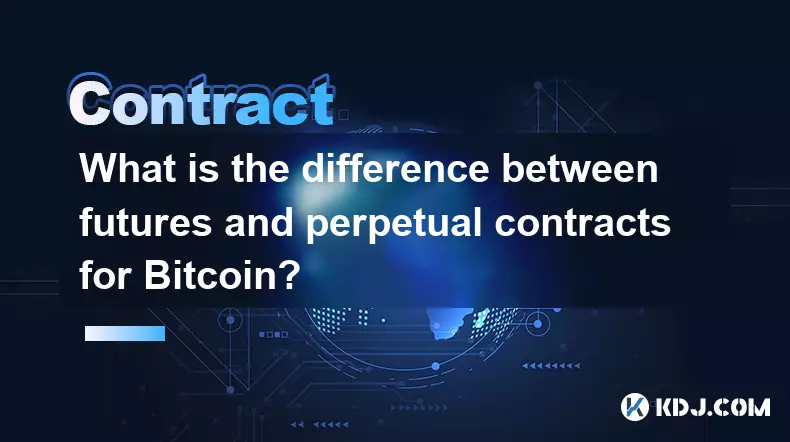
What is the difference between futures and perpetual contracts for Bitcoin?
Oct 02,2025 at 11:54pm
Understanding Bitcoin Futures Contracts1. Bitcoin futures are derivative instruments that allow traders to speculate on the future price of Bitcoin at...
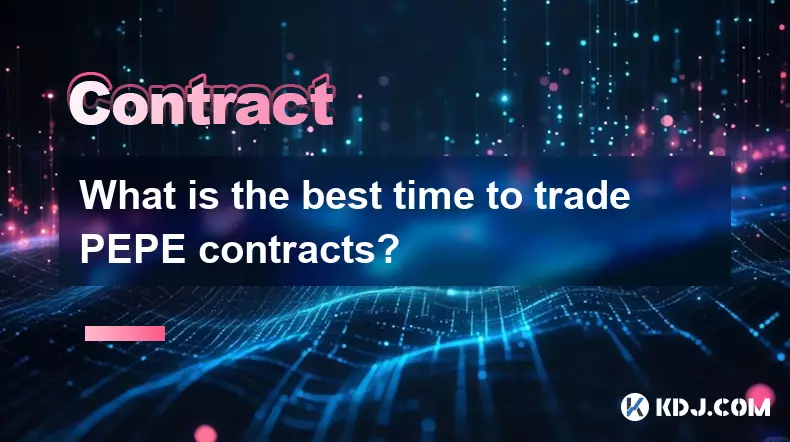
What is the best time to trade PEPE contracts?
Oct 03,2025 at 11:54am
Understanding PEPE Contract Volatility1. PEPE contracts exhibit extreme price fluctuations due to their meme-based nature and low market cap. Trading ...
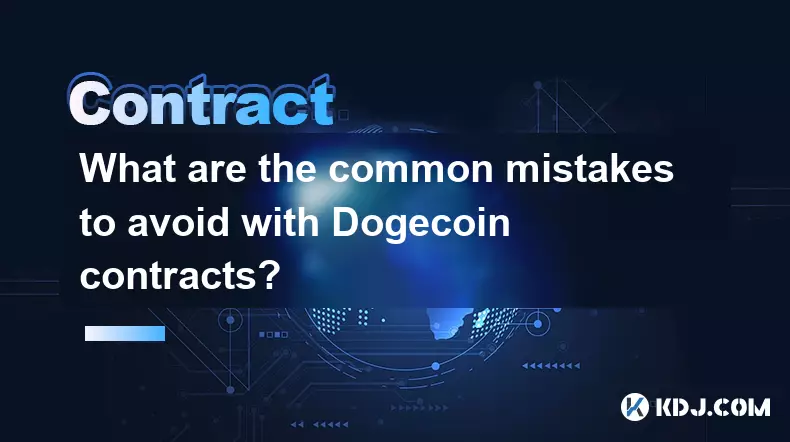
What are the common mistakes to avoid with Bitcoincoin contracts?
Oct 03,2025 at 08:54am
Emerging Trends in the Cryptocurrency Market1. Decentralized finance (DeFi) platforms continue to expand their influence across the blockchain ecosyst...

What is the maintenance margin for Bitcoin contracts?
Oct 02,2025 at 01:36am
Decentralized Exchanges Gain Momentum in 20241. Decentralized exchanges (DEXs) have seen a significant rise in trading volume, surpassing centralized ...
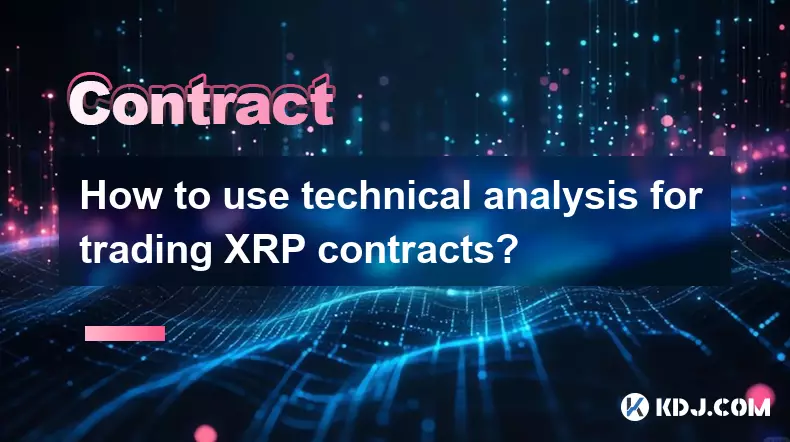
How to use technical analysis for trading XRP contracts?
Oct 03,2025 at 01:18pm
Understanding Price Patterns in XRP Futures1. Identifying chart patterns such as triangles, head and shoulders, and double tops or bottoms can provide...

What does "longing" PEPE contracts mean?
Oct 03,2025 at 11:54pm
Understanding Decentralized Exchanges in the Crypto Ecosystem1. Decentralized exchanges (DEXs) operate without a central authority, allowing users to ...

What is the difference between futures and perpetual contracts for Bitcoin?
Oct 02,2025 at 11:54pm
Understanding Bitcoin Futures Contracts1. Bitcoin futures are derivative instruments that allow traders to speculate on the future price of Bitcoin at...

What is the best time to trade PEPE contracts?
Oct 03,2025 at 11:54am
Understanding PEPE Contract Volatility1. PEPE contracts exhibit extreme price fluctuations due to their meme-based nature and low market cap. Trading ...

What are the common mistakes to avoid with Bitcoincoin contracts?
Oct 03,2025 at 08:54am
Emerging Trends in the Cryptocurrency Market1. Decentralized finance (DeFi) platforms continue to expand their influence across the blockchain ecosyst...

What is the maintenance margin for Bitcoin contracts?
Oct 02,2025 at 01:36am
Decentralized Exchanges Gain Momentum in 20241. Decentralized exchanges (DEXs) have seen a significant rise in trading volume, surpassing centralized ...

How to use technical analysis for trading XRP contracts?
Oct 03,2025 at 01:18pm
Understanding Price Patterns in XRP Futures1. Identifying chart patterns such as triangles, head and shoulders, and double tops or bottoms can provide...

What does "longing" PEPE contracts mean?
Oct 03,2025 at 11:54pm
Understanding Decentralized Exchanges in the Crypto Ecosystem1. Decentralized exchanges (DEXs) operate without a central authority, allowing users to ...
See all articles










































































